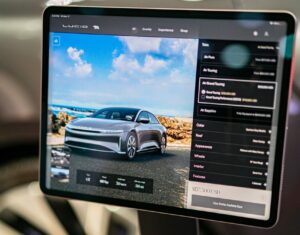
Home / EV Charging News / The Role of Government and Private Sector Collaboration in Electric Car Infrastructure: Exploring the importance of collaboration between governments, utilities, and private companies in building a comprehensive and accessible charging infrastructure
In recent years, there has been a significant shift towards electric vehicles (EVs) as an environmentally friendly and sustainable mode of transportation. As the demand for EVs continues to rise, the need for a robust and accessible charging infrastructure becomes paramount. Building a comprehensive charging infrastructure requires the collaboration and partnership between governments, utilities, and private companies. This article will explore the importance of such collaboration and how it contributes to the development of an efficient and reliable electric car infrastructure.
The increasing awareness about environmental concerns and the desire for sustainable transportation options have fueled the growth of electric vehicles. EVs offer numerous advantages, including lower emissions, reduced dependence on fossil fuels, and potential cost savings. As more individuals and businesses embrace EVs, the demand for a well-established charging infrastructure becomes crucial.
A robust charging infrastructure is essential to support the widespread adoption of electric vehicles. It ensures that EV owners have convenient and reliable access to charging facilities, enabling them to travel longer distances without range anxiety. The availability of charging stations in residential areas, workplaces, public spaces, and along highways encourages more people to transition to electric vehicles confidently.
Governments play a pivotal role in facilitating the development of electric car infrastructure. They can implement policies and regulations that incentivize the adoption of EVs and support the establishment of charging networks. By providing financial incentives, tax credits, and grants, governments encourage private companies and utilities to invest in charging infrastructure. Additionally, they can streamline the permitting and installation process, making it easier for businesses and individuals to set up charging stations.
Utilities, such as power companies, are key players in the electric car infrastructure ecosystem. They possess the necessary expertise in managing and distributing electricity. Collaborating with utilities allows for efficient planning, installation, and maintenance of charging stations. Furthermore, utilities can leverage their existing grid infrastructure to integrate charging infrastructure seamlessly. By working together, governments, utilities, and private companies can ensure a reliable and cost-effective charging network.
The private sector, including automobile manufacturers, technology companies, and charging station operators, brings innovation and investment to the electric car infrastructure landscape. These entities have the resources and knowledge to develop cutting-edge charging technologies, improve charging speeds, and enhance user experience. Private companies can also invest in research and development, creating advanced charging solutions that cater to the evolving needs of electric vehicle owners.
Collaboration between governments, utilities, and private companies offers several benefits for the development of electric car infrastructure. Firstly, it promotes standardization and interoperability of charging stations, ensuring that EV owners can charge their vehicles at any compatible station. Secondly, collaboration helps optimize the distribution of charging stations based on demand and traffic patterns, avoiding unnecessary duplication and ensuring adequate coverage. Lastly, collaboration fosters innovation and cost-sharing, making the expansion of charging infrastructure economically viable for all stakeholders involved.
While collaboration isessential, there are challenges that need to be addressed. One of the main challenges is the need for standardized protocols and interoperability between different charging networks. Establishing common technical standards enables seamless charging experiences for EV owners across various locations and charging providers. Additionally, the cost of infrastructure installation and maintenance can be a barrier. Collaboration allows for cost-sharing and leveraging resources, making it more feasible to expand the charging network.
Several countries and regions have already made significant progress in government and private sector collaborations for electric car infrastructure. For instance, in the Netherlands, the government has implemented favorable policies, including tax incentives and subsidies, to encourage EV adoption. This, combined with partnerships with private companies and utilities, has led to the development of an extensive charging infrastructure throughout the country. Similarly, California in the United States has witnessed successful collaborations between the government, utility companies, and private entities, resulting in the establishment of a widespread network of charging stations.
The collaboration between governments, utilities, and private companies in the electric car infrastructure sector is poised for further growth and expansion. As the demand for electric vehicles continues to rise, there will be an increased focus on developing a comprehensive and accessible charging infrastructure. Governments will likely introduce more favorable policies and regulations, while utilities and private companies will invest in innovative charging solutions. Collaboration will be the key to overcoming challenges and building a sustainable and efficient charging network for future generations.
The role of government and private sector collaboration in electric car infrastructure is instrumental in building a comprehensive and accessible charging network. By working together, governments, utilities, and private companies can overcome challenges, drive innovation, and ensure the widespread adoption of electric vehicles. The development of a robust charging infrastructure supports the transition to a cleaner and more sustainable transportation system, benefiting both the environment and society as a whole.
$4,150.00 Original price was: $4,150.00.$3,990.00Current price is: $3,990.00.
$10,690.00 – $11,390.00

Your Power Management Partner for Over 25 Years Future Generations Depend on Our Decisions Today ™
2024 © All rights reserved by CyberSwitching